One of several highlights of our holiday was a guided tour of part of the Daintree National Park. There was so much to see! But we’d probably have walked straight past some wonderful plants & animals if it wasn’t for our guide, Ross. For example, the first time we encountered a Boyd’s forest dragon, all of us would have walked straight past this beautiful little reptile if Ross hadn’t drawn our attention to it. Clinging to a slender tree trunk, it looked so much like a piece of warped & broken bark. The one we managed to photograph was a bit more obvious, but by that time we’d got the right search image. (The little fellow was about 30cm long, & quite well camouflaged even when lit up by the flash.)

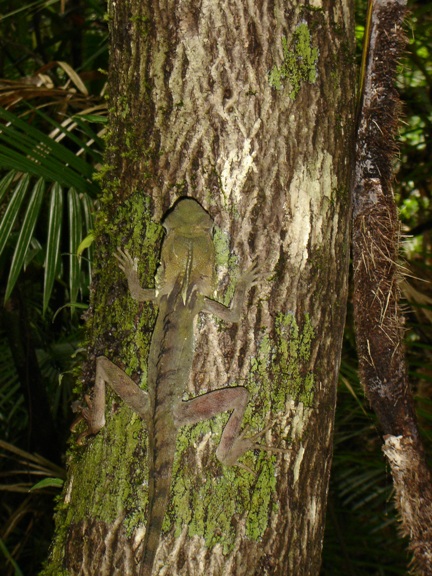
And we’d almost certainly have missed the ant hotels… umtil Ross drew our attention to thin vertical slits in the trunk of a reddish, narrow-trunked tree called a red satin-ash. In this first photo you can see the thin dead leaf that he’d inserted into one of these slits.
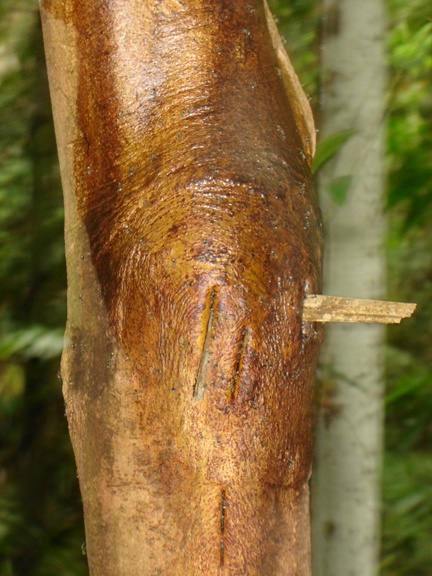
Each of those slits is the opening into a space within the trunk, colonised by a species of ant. A rather aggressive species – within a minute or so of that dead leaf going in, it was swarming with agitated ants. (Ross warned us not to lean on the tree as its resident ants have a rather nasty bite.)
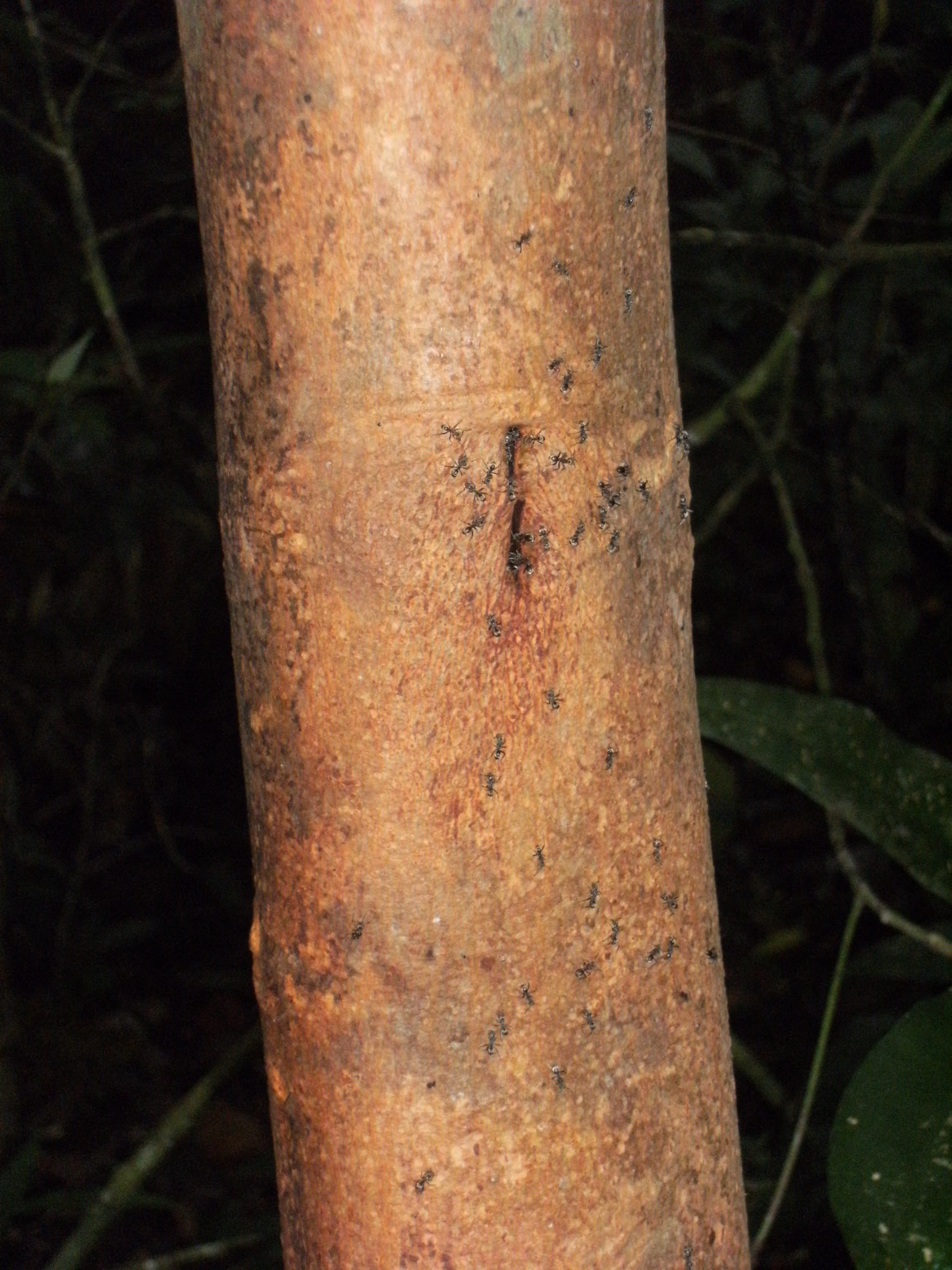
You might remember that I’ve written about something like this before: some species of African acacia grow special hollow thorns that are colonised by various species of ants, many of which vigourously defend the acacia from incursions by other animals. And that’s just what’s going on here – the slits, & the cavities behind them, are grown by the tree, providing a home for the ants. And in turn the ants appear to protect the tree from unwanted guests – certainly this one had no plants or lichens growing on it, & certainly there wasn’t any evidence of beetles & other potential herbivores on its stem.
But we didn’t need an introduction to the strangler fig, as most of those in the party had seen them before (in our case, in Vanuatu last year). Like the rata discussed in one of this year’s Level 3 Biology exam questions, the strangler fig starts off life as an epiphyte on another tree. However, it fairly quickly starts to send down aerial roots which (just as for the rata) develop into much more substantial cable-like structures once they reach the ground.

Over time the host tree is completely enclosed by this burgeoning root system, which effectively becomes the trunk of the fig. (One of the strangler figs we saw in the Daintree was in the process of swallowing up another, neighbouring tree, thus enlarging its own ‘trunk’.)
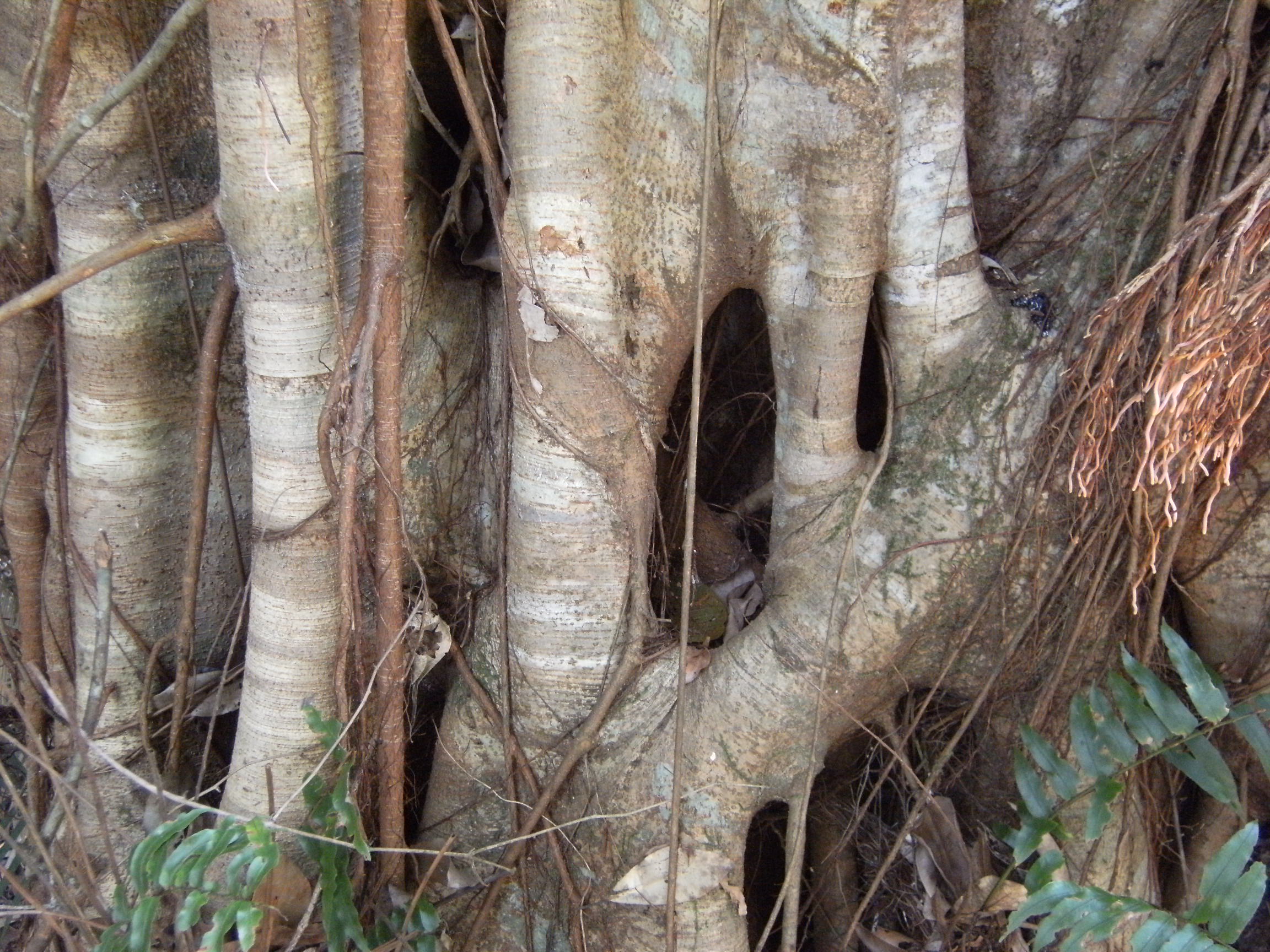
Eventually the host tree may die & rot away as the fig, epiphytic no longer, outcompetes it for light & nutrients, leaving the hollow fig trunk of interwoven roots. (I thought this trunk rather cathedral-like. Antoni Gaudi’s buildings in Barcelona have a similar organic feel to them, including the still unfinished La Sagrada Familia cathedral.)
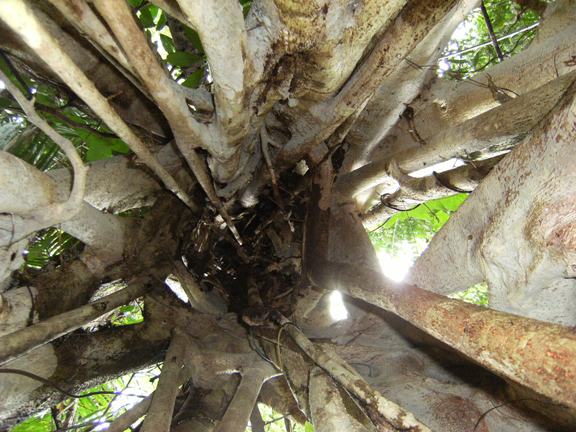
Another example of the complex ecological relationships found in a rainforest 🙂